Standing on the Big Hole in the Ground
October 16, 2023 – Day 18
Homolovi State Park is a good radio destination. Paul played radio for 1-2 hours each morning that we were there, and about an hour in the evening. He logged over 200 contacts including Japan, Australia, Indonesia and even Antartica! While we’re at Homolovi assume Paul is doing radio stuff at least once a day.
Morning was beautiful. Susan captured this excellent photo. As luck would have it there would be no other opportunities as the leaves were falling off and the tree never looked that good again.
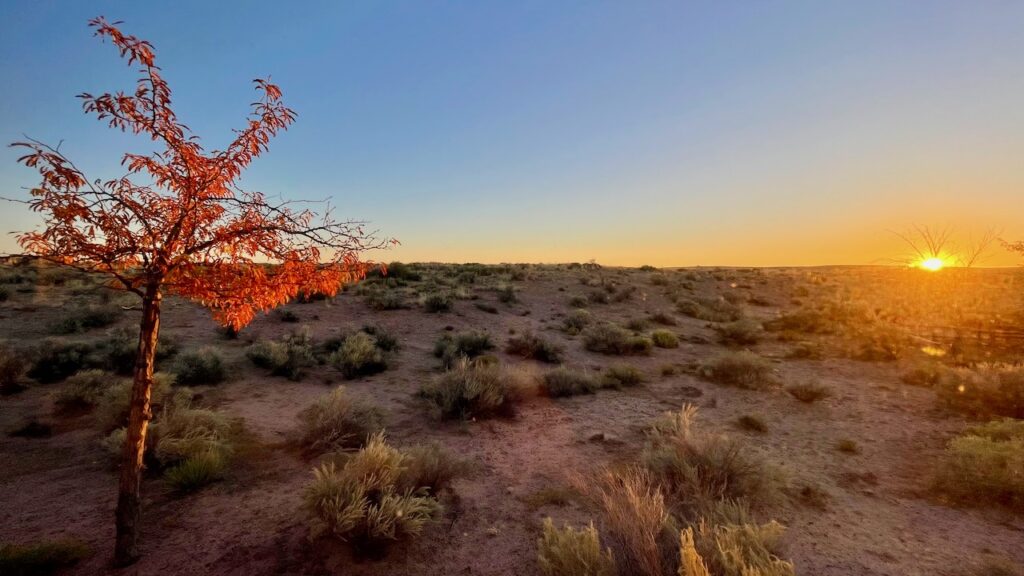
We headed into Winslow AZ for brunch.
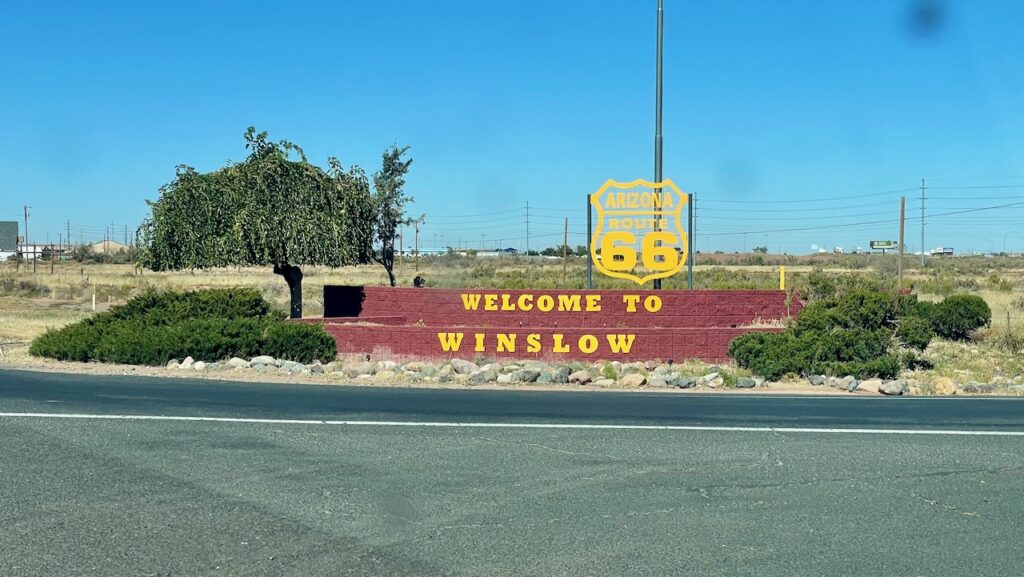
Winslow AZ is a tiny town, along Route 66. It doesn’t have much going for it. That all changed in 1972 when the band The Eagles released their first single, “Take it Easy.”
Well, I’m a standing on a corner in Winslow, Arizona
Take it Easy, The Eagles – 2nd verse
And such a fine sight to see
It’s a girl, my Lord, in a flatbed Ford
Slowin’ down to take a look at me
Paul wants to make sure that you Joe Walsh a singer, songwriter and guitarist for The Eagles is better known as WB6ACU. In 1961 he became a ham radio operator at the age of 14.
In 1999 Winslow figured out that they should do something with this notoriety. They built the Standing on the Corner Park and parked a flatbed Ford on the corner. It revitalized that part of the town and turned it into a real life “Build it and they will come.” Lunch at the appropriately named “Flatbed Cafe” was quite good! We’ve found that these tiny towns have two kinds of eating establishments. The ones where the food is terrific and the ones you’ll never return to. This was a “return to” and we planned on returning lunch for the next day.
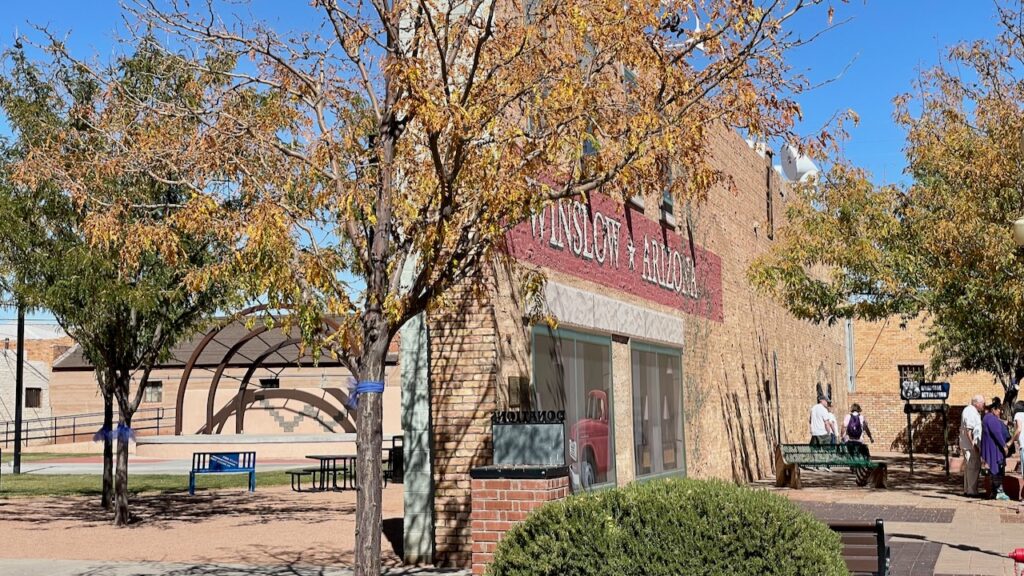
Of course we took the mandatory selfie by the flatbed Ford.
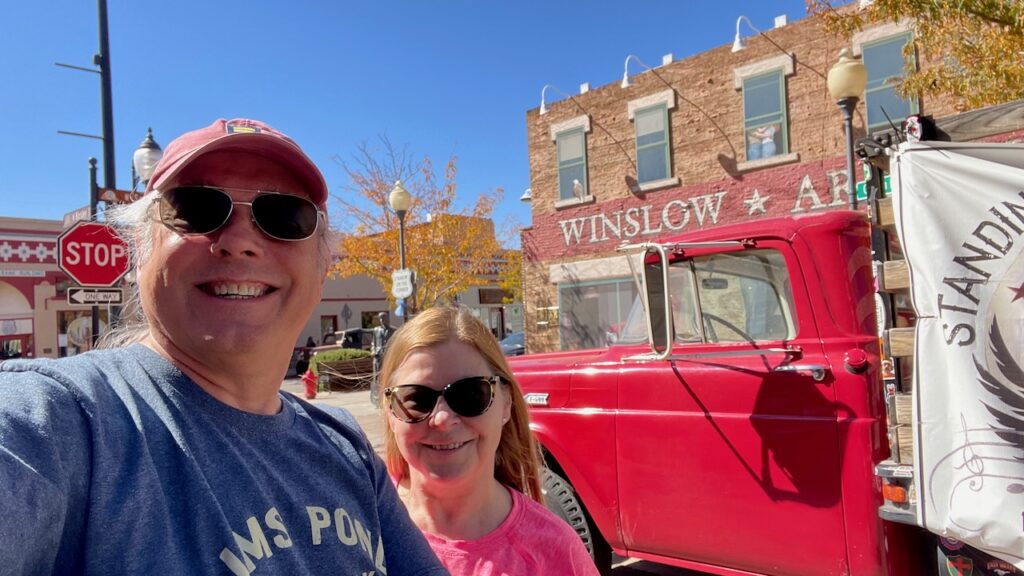
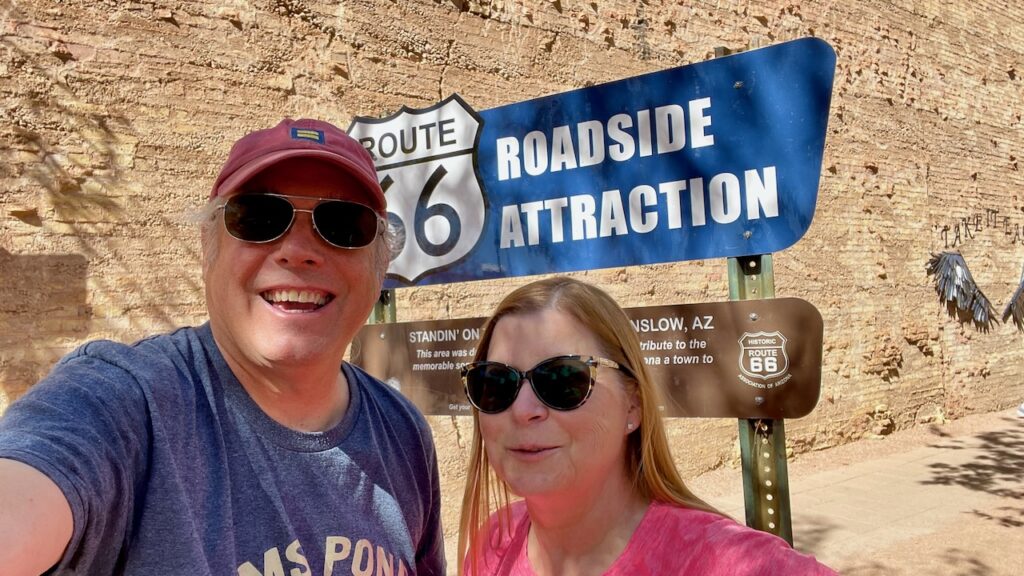
We listened to Tomy Dukes, street musician that’s been inducted into the Arizona Blues Hall of Fame. He played and sang really well. But if you stood near him he’d just want to talk to you. After some chatting we ducked around the corner sit in the shade and listen but he kept on interrupting his singing to chat with other folks that were passing by. Paul felt odd asking him for a photo so we just took a photo of his mural around the corner and down an alley.
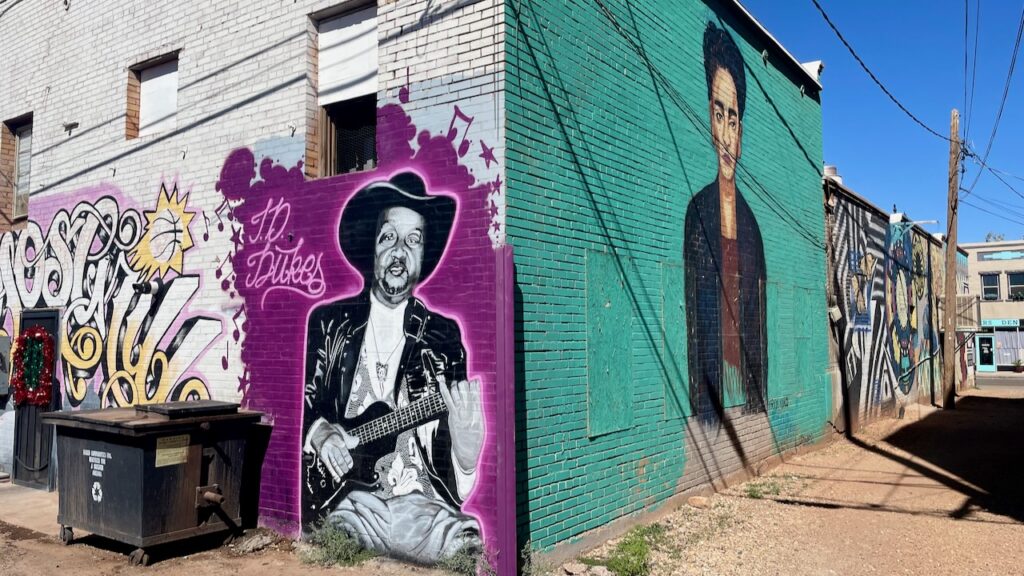
We headed out of town back to the coach to drop off leftovers from the Flatbed Cafe in our fridge. Then we headed out to Meteor Crater.
On the way over we passed yet another truck, but this one was carrying a really large…something.
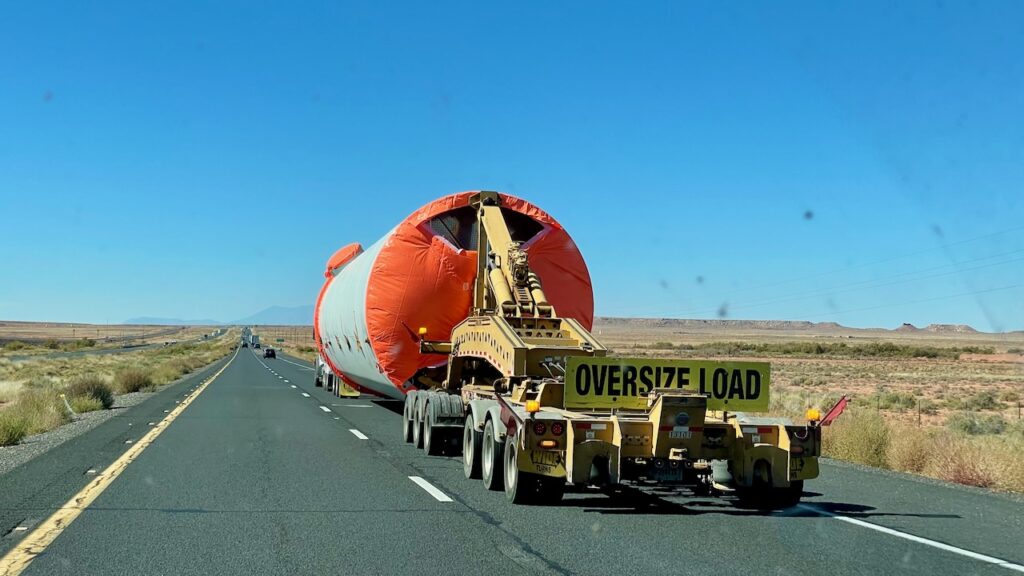
We’re not sure if it was later on that day, or the next, we saw a bunch of these pulled over in a rest area along with some windmill blades. That must be part of the tower when the windmill goes up. We would see more of these as we drove around the area.
Paul, the science geek, had known about Meteor Crater since he was a kid and had always had wanted to visit it. Neither of us could remember how big it was. It did appear pretty big from the distance. Attempts have been made to turn it into a national landmark but it still remains in the hands of the Barringer family.
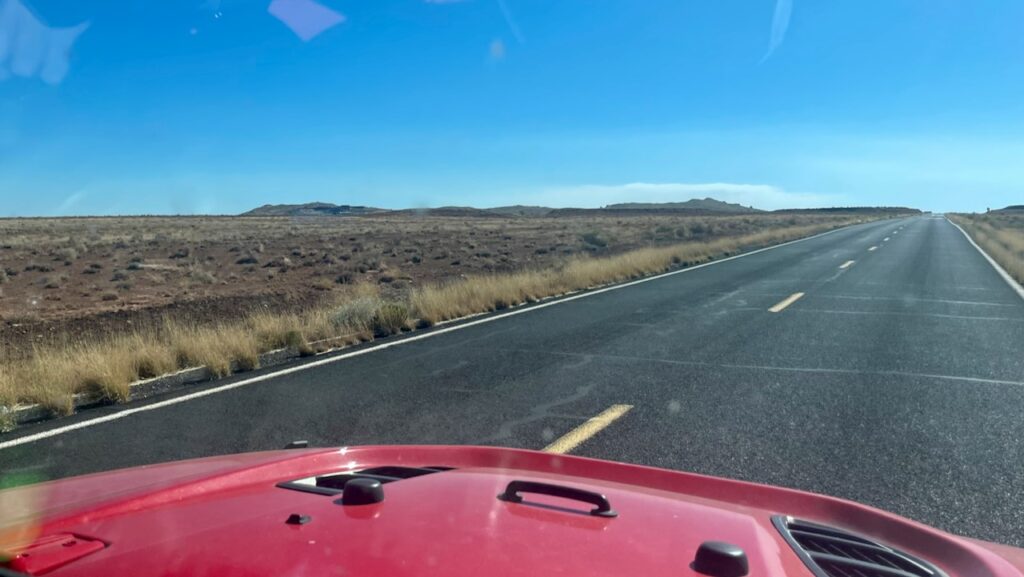
It’s open range so you might see a cow, deer or sheep. We saw a herd of about 14 deer.
After the $2 senior discount it was $25 each to get into the museum. At the time it seemed pretty high to stare at a big hole in the ground. However, the museum and exhibits are well thought out and presented. The crater itself did not disappoint. Pictures don’t convey the vastness that standing on the rim will.
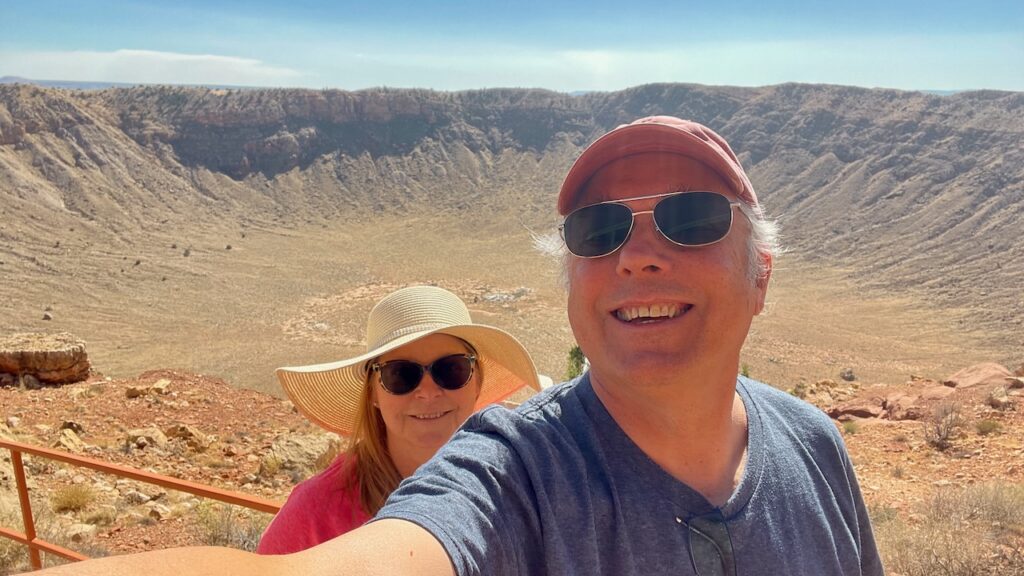
It turns out it is about 3,900 feet across and 560 feet deep. Erosion has taken away about 50 feet of the crater walls over the past 50,000 years, and an additional 100 feet of material has been deposited on the surface. So basically it used to be taller and deeper. Even in it’s “diminished state” it was still pretty impressive.
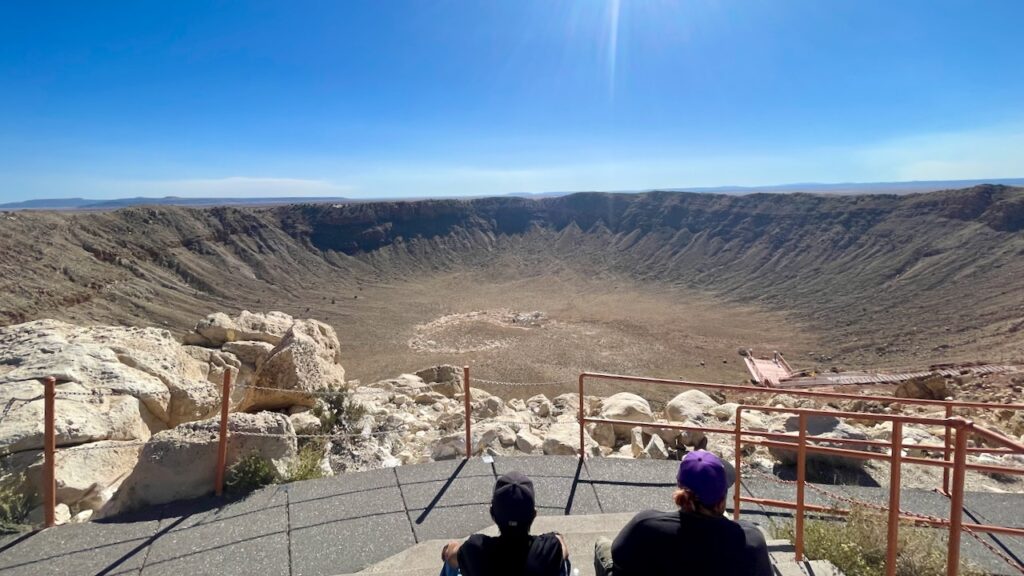
Using our iPhone’s pathetic zoom you can see the impact area.
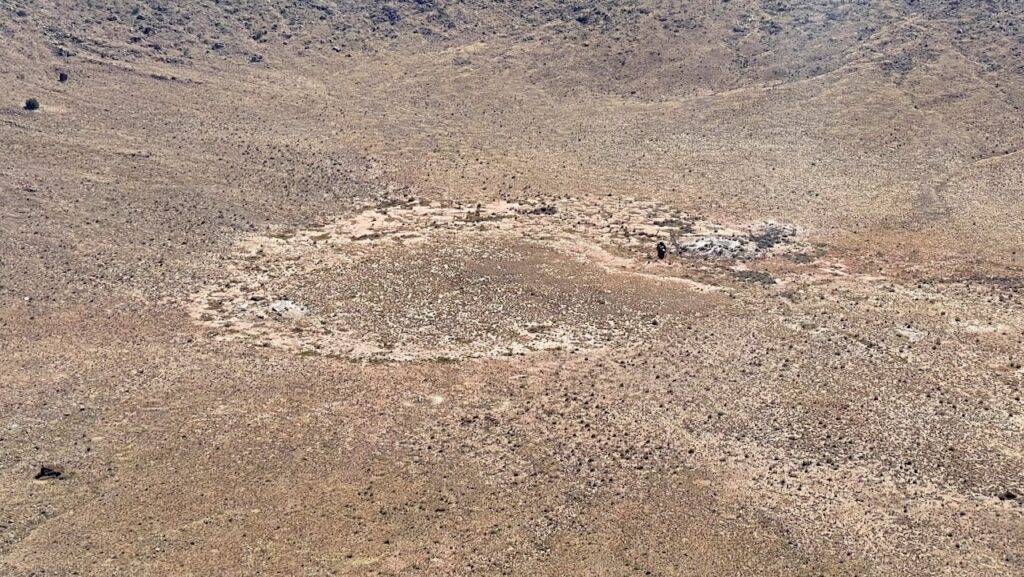
Way off to the right is a white area. That’s where scientists have dug a 200 feet trench trying to find the meteorite itself. They never found it. It’s believed to have been shattered on impact and some parts of it were flung miles away. With binoculars, you can see a life size cut-out of an astronaut.
From 1963 through late 1970, Apollo astronauts trained at Meteor Crater because of its similarity to lunar craters.
To give visitors a sense of Meteor Crater’s scale, the Museum staff has placed a flag and an astronaut cut-out on the floor of the crater. The flag is the same size as the flag placed by the first astronauts on the moon it measures three feet by five feet (one meter by 1.5 meters). The astronaut cut-out stands 6′ tall (two meters).
Curiously though, this crater help scientists realized that that it was a meteor crater, not a volcanic crater. A scientist who was familiar with the craters left by atomic bomb testing visited the site and said, “Oh, that’s how it was made.” This process is known as Reverse Stratigraphy.
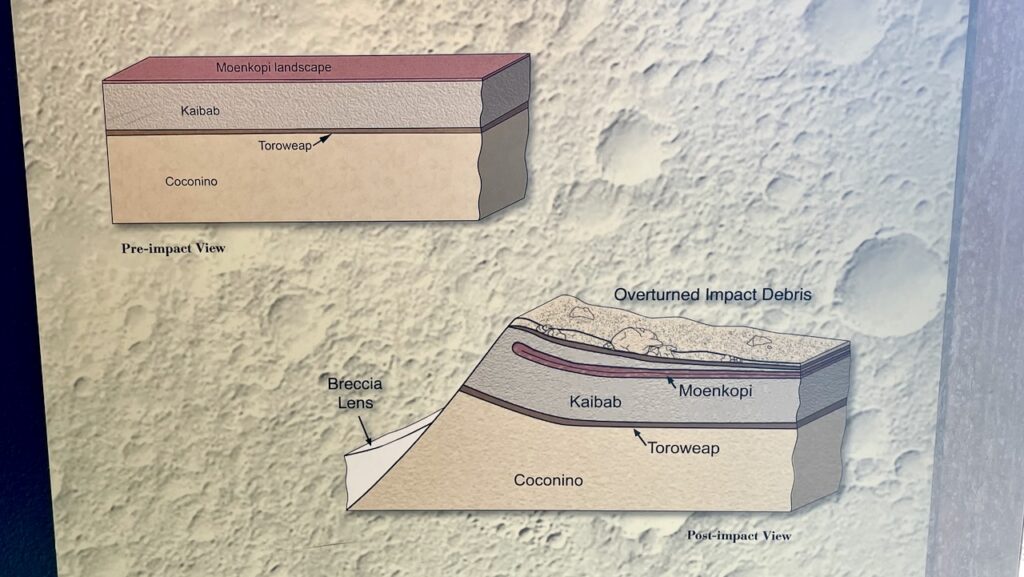
When the asteroid impacted at Meteor Crater, the explosion was so immense that it blew rock out of the crater and flipped it upside down onto the crater rim. What was once a bottom layer became the top, and vice-versa. This is referred to as reverse stratigraphy. This same phenomenon occurs in the impact rims of nuclear explosion craters and is a common attribute of impact craters.
Paul was puzzled by the lack of a central peak. He’s viewed countless craters on the Moon with his telescopes and most of them had central peaks. It turns out, there are two kinds of craters.
Scientists divide craters into two main groups: simple and complex. Simple craters are relatively small and have a simple structure. Meteor Crater is a good example. Larger craters often have a more complex structure, with a distinctive central peak caused by the crater floor springing back up after the initial shock of impact.
The Holsinger Meteorite was on display, it is pretty impressive, and large.
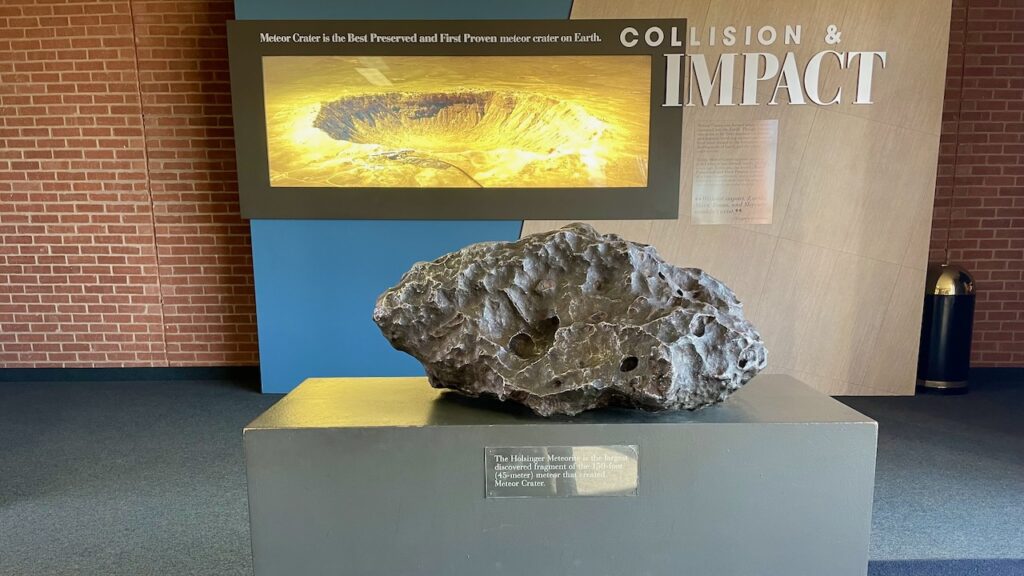
There was a free outdoor tour of the part of the rim. The guide stressed that although it was paved, it was not easy and if even a single person had to go back, the entire tour would go have to go back. We both wanted to go but the oppressive heat and the 5600′ altitude were taking their toll on us. Smartly, we declined to do the outdoor tour.
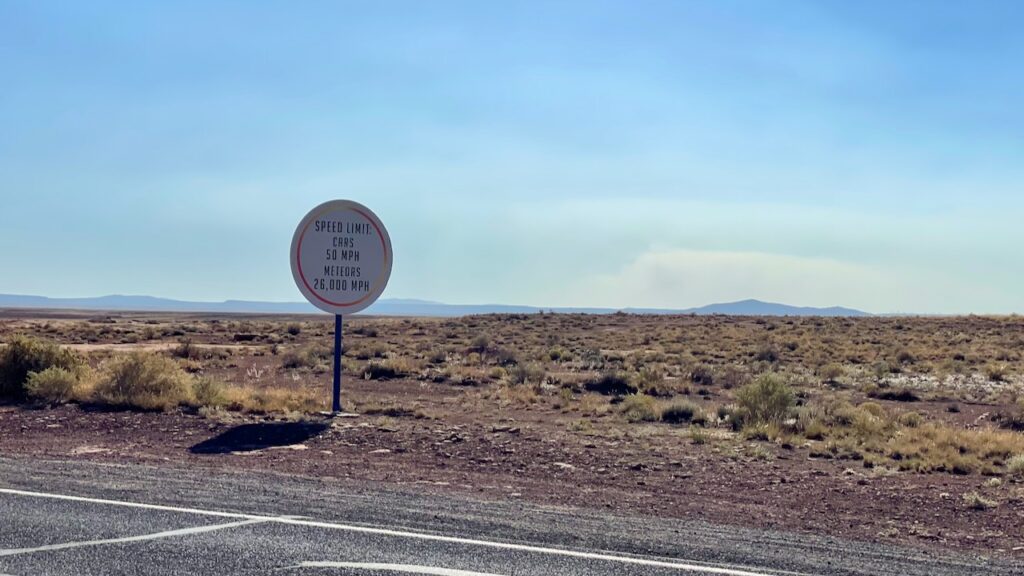
It is really worth the visit, the size of the crater is impressive and the museum is worth it.
Daily: 0
Total: 2,916
Moving Miles/Day: 324
Overall Miles/Day: 162
